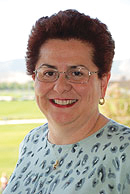Eye on Extension: Vitamins and minerals, how much to take?

VALLEY — You’re in the pharmacy aisle on what seems like a simple mission, pick up some vitamins. But a quick glance at a bottle’s label can send you running for a dictionary. Things like “RDA” or “DV” are just a few examples of an alphabet soup that’s on many packages. Don’t despair; here are some supplement guidelines.
Many of the terms you see on labels can help you understand how much of the vitamin or mineral you should take. For example, here are some guidelines set up by the Institute of Medicine:
* The RDA (Recommended Dietary Allowance) and the AI (Adequate Intake) are the amounts of a vitamin or mineral you need to keep healthy and stay well-nourished. They’re tailored to women, men, and specific age groups.
* The UL (Tolerable Upper Intake Level) is the maximum amount of daily vitamins and minerals that you can safely take without risk of an overdose or serious side effects. For certain nutrients, the higher you go above the UL, the greater the chance you’ll have problems. Separate from the RDA and the UL, the Food and Drug Administration uses a different measure for the nutrients you need.
* The DV (Daily Value) is the only measurement you’ll find on food and supplement labels. That’s because space is limited, and there’s a need for one single reference number. That number is the amount of a vitamin or nutrient that you should get for top health from a diet of 2,000 calories a day. The DV is sometimes the same as the RDA.
Although the details may be different, remember that the RDA and DV are both set up to help you get the nutrients you need to prevent disease and avoid problems caused by lack of nutrition.
How much is too much?
Because high doses of some supplements can have risks, how do you know when it’s OK to take more than the RDA or DV? One way is to look for the UL (tolerable upper intake level of a nutrient.
I’ll talk more about vitamins and minerals in my next column.
For more information contact Mary Ellen Fleming at 852-7381, or visit the CSU Extension Office for the San Luis Valley Area at 1899 E. Hwy 160 in Monte Vista. Please feel free to visit our website at: http://sanluisvalley.colostate.edu for information about services provided.
Extension programs are available to all without discrimination, Colorado State University Extension, U.S. Department of Agriculture and Colorado Counties cooperating.



